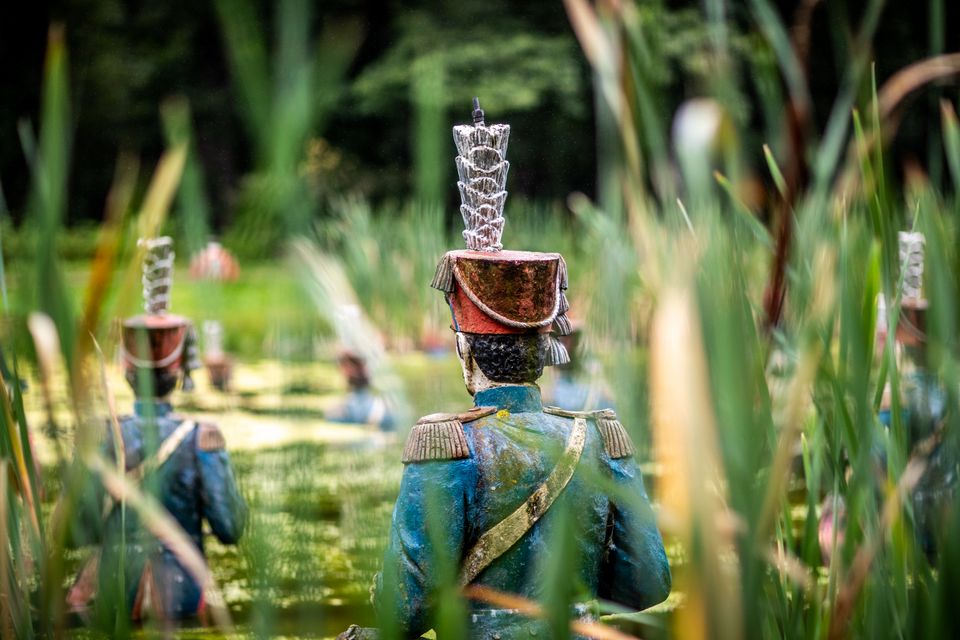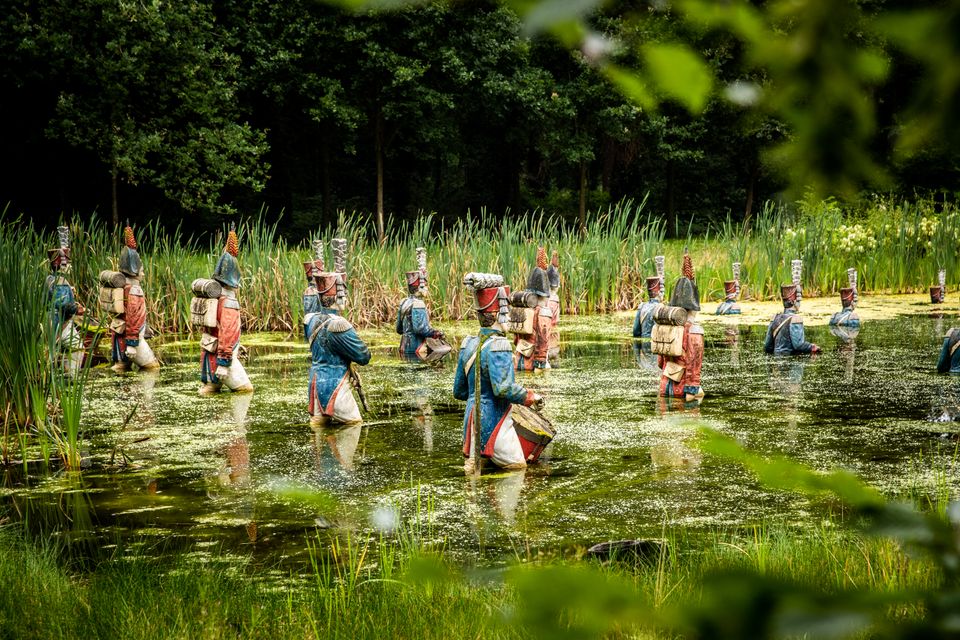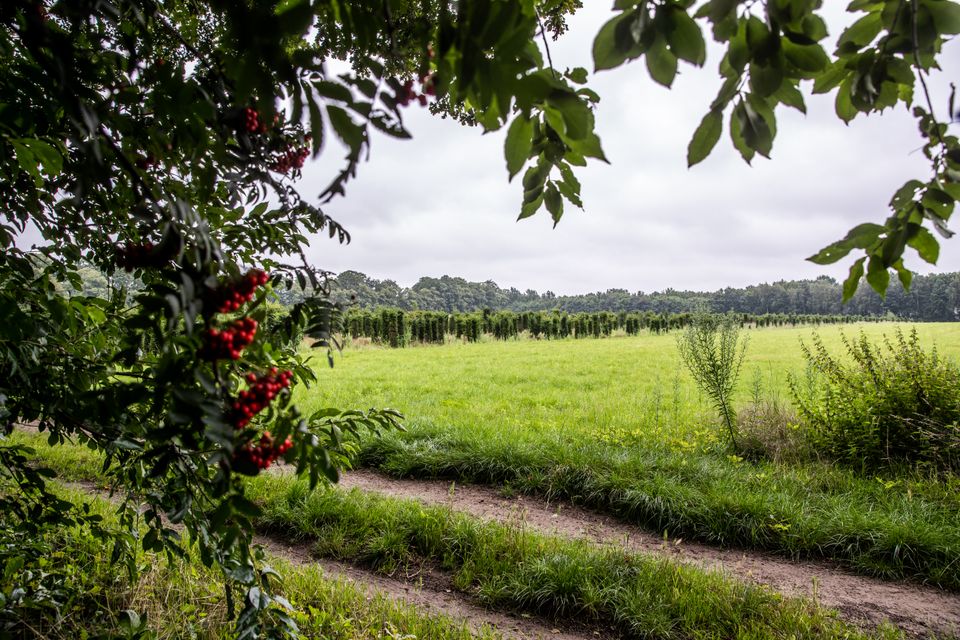A landmark of memories
Landgoed Steenenburg has a long and rich history. Once the summer residence of the aristocracy it served as a hospital during the French occupation. Centuries later beloved amusement park Land van Ooit was a place where fairytales became true. Over the years the estate, dating back to the 13th century, has been known by several glorious names such as Steenenburgh, d’Oultremont, Huis te Drunen and Poort van Heusden. Nowadays, Landgoed Steenenburg is a place where we dream about the future with a name remining us of its rich past.
Time travel through the history of the estate
Walking down the historical Kasteellaan with its graceful old trees, you get a glimpse of olden times. This used to be the driveway to the castle, the residence of counts and countesses. The large woodlands, fields and marshlands were the backdrop for fox hunts, a favorite pastime of the aristocracy, and until more recently for the famous knight battles in Land van Ooit. Now a new era for the estate has begun: The renewed Landgoed Steenenburg will be characterized by nature and water, peace and quiet. Nature conservation is a focus point of the development.

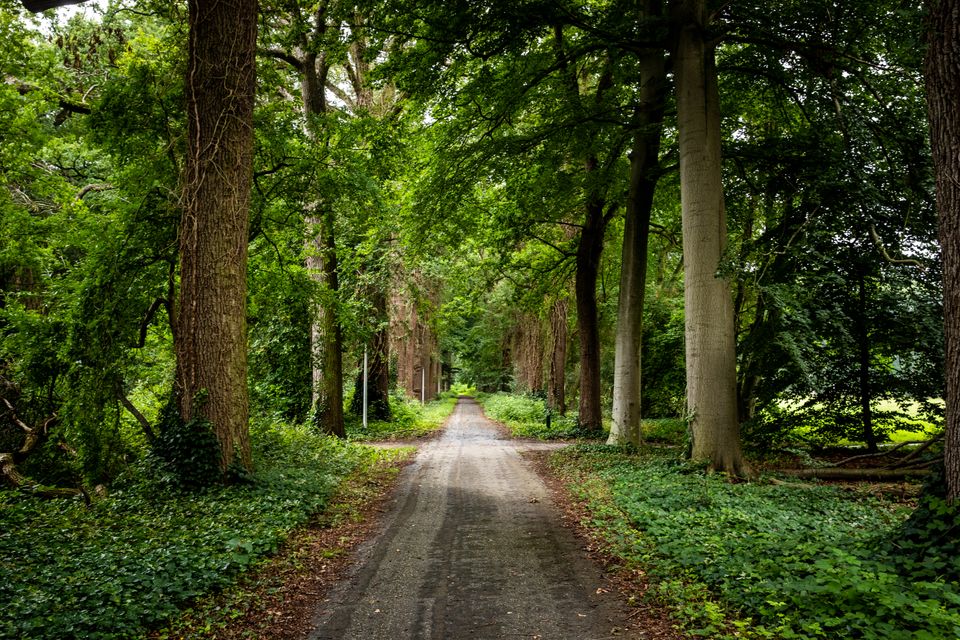
Where duchesses, countesses, lords and barons reigned
The estate has a fairytale-like history that goes back to 1231 when Dirk van Altena gave the lands of what is currently Heusden to the Duke of Brabant. About 150 years later Johanna, Duchess of Brabant, pledged it to Lord Paul van Haastrecht in whose family it remained for six generations. Until the male blood line would eventually die out with Karel van Haastrecht.
His daughter Isabella inherited the estate and married Johan van Wassenaar, Count of Warmond, in 1653. Her granddaughter Maria Isabella van Beieren-Schagen, Countess of Warfusé, married the Belgian Count d’Oultremont in 1707. Until 1987 the estate was in possession of the family d’Oultremont when it was sold to Marc Taminiau. He opened the amsuement park Land van Ooit.
Castle d’Oultremont over the centuries
The current Castle d’Oultremont used to be a gatehouse or front building of the original castle Steenenburgh. During the French occupation the castle served as a hospital until it burned down in 1795. A century later architect Hendrik Jacobus van Tulder transformed the gatehouse into the castle as we know it today. Stepped gables, arched windows and octagonal turrets give the centuries-old castle its distinctive appearance. Once painted in a bright pink, since a careful restauration in 2011 the castle shines again in its original color.

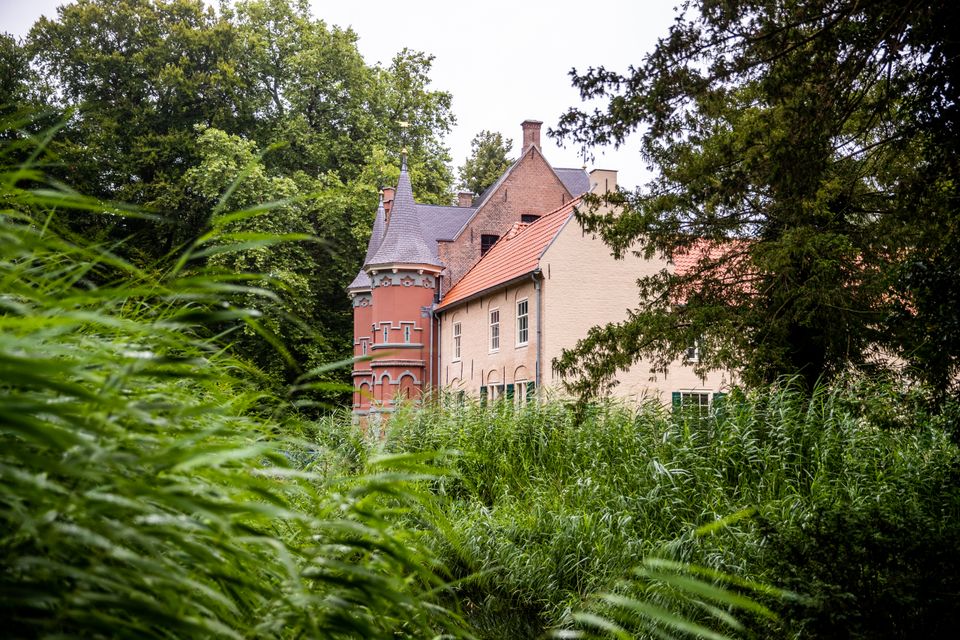


The name Steenenburg is an ode to Castle Steenenburgh, the lost stone castle.
The life of the stewards
The estate was the summer residence of the counts d’Oultremont. The family visited from Brussels during the summer months and for the fox hunt. The steward managed the estate and was confidant of the Count. Usually, this role was reserved for the court chaplain who as well read the Mass during the family’s visit. But in 1872 gardener Arnoldus Roestenburg was given the trusted role of steward. Until 1976, the family Roestenburg lived in the castle. Arnoldus’ great-grandson Henk still remembers.
Read more

Once upon a time
In 1986, count Roland d’Oultremont decided to sell the estate as the maintenance costs were running high and could not be covered anymore by the sales of fruit and wood. Jan Taminiau, former director of amusement park Efteling, bought the estate and opened Land van Ooit in 1989. The name roughly translates to “Land of Once upon a time”. The park was reigned by children and home to mystical creatures such as Ridder Graniet, Sap de Aardwortel and Kloontje het Reuzenkind.
The park closed in 2007, but you can still find remnants from that time. The soldiers still remain in the castle pond and on Duizendstappenlaantje. When the municipality of Heusden became owner of the area, the castle was renovated, and the area was opened for hikers under the name De Poort van Heusden. During the restauration of the castle the characteristic pink paint from the Land of Ooit era was removed. Now Landgoed Steenenburg will be transformed into a unique living and working area with allure.
Napoleon’s stone soldiers
The fascinating stone figures in the castle pond are said to be soldiers in Napoleon's army. According to a fantastic story told in Land van Ooit they were petrified by Stor de Bostor. Today they are of great historic value. For decades the soldiers were abandoned to their fate, slowly drowning in a sea of reed. In consultation with nature and environmental associations parts of the water have been freed from the plants. The soldiers are visible again. It is being investigated whether it is possible to restore the figures to their old glory. For many, the soldiers are an enduring memory of their youth wandering around Land van Ooit.
